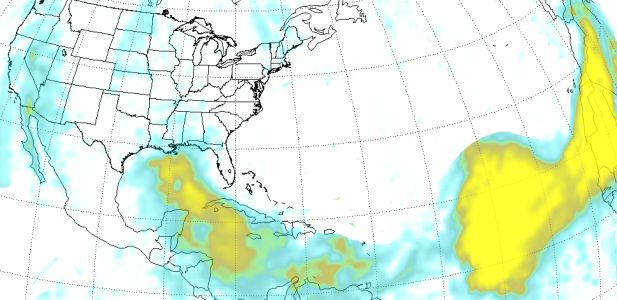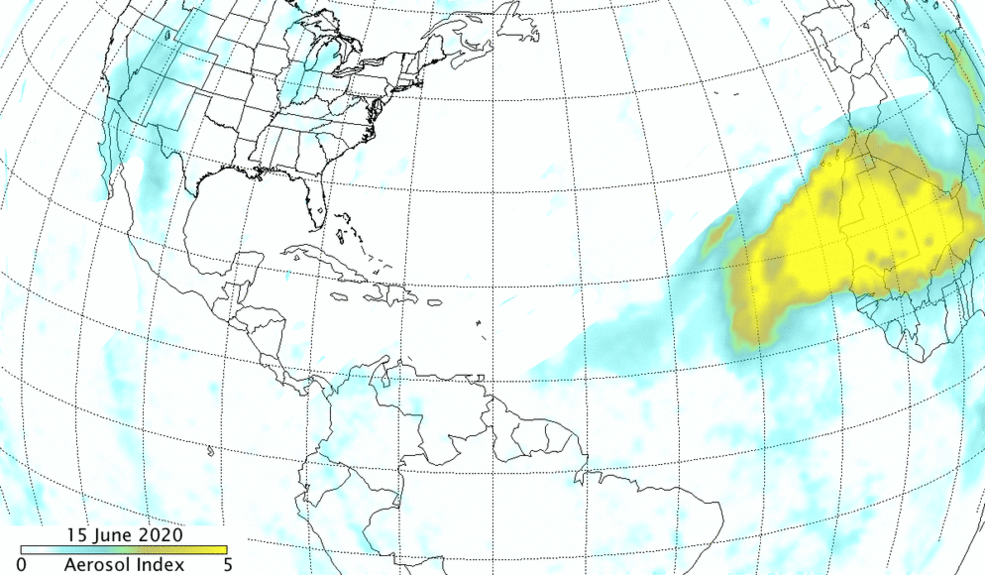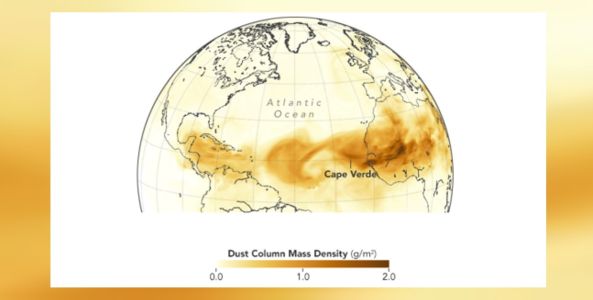
Health concerns as Saharan Dust cloud arrives in the United States
Over the last several days, the dust cloud floating through the atmosphere carrying particles from the Sahara Desert reached the United States. The African dust storms traveling across the Atlantic Ocean are nothing new; but the current storm has been quite expansive; and NASA satellites have provided a look at the massive June plume. Recent satellite images showed that the blanket of dust had moved over the Gulf of Mexico and extended into Central America and over part of the eastern Pacific Ocean, according to NASA.
This past weekend, the dust storm moved into the Southeastern United States, and extended into South Carolina, Virginia and Georgia. The current Saharan dust storm will produce “the highest concentration of particles observed in the past 50 to 60 years,” according to ABC News out South Carolina.

The animation above shows the aerosols in the Saharan dust plume from June 15 to 25, 2020. The dust plume moved from Africa’s west coast over the Atlantic Ocean into the Caribbean Sea and up through the Gulf of Mexico. The largest and thickest part of the plume is visible over the eastern and central Atlantic. Credits: NASA/NOAA, Colin Seftor
The Georgia Department of Public Health is urging people, especially individuals with chronic lung conditions, to protect themselves from dust from the Saharan dust cloud as it moves over the States. The dust cloud is expected to be around Georgia for the next few days.
The dust can cause eye, nose and throat irritation for anyone who comes in contact with it and may cause wheezing in people with allergies or asthma. The best advice is to limit exposure to the dust and take precautions to protect your health:
- If it appears hazy or dusty outside, limit outdoor activities such as yard work, exercise, children playing.
- Wear a face mask outside to keep dust particles out of the nose and mouth, and to help prevent the spread of COVID-19.
- Pay attention to local air quality reports and news coverage related to the dust plume.
- Keep indoor air as clean as possible. Keep windows and doors closed. Run an air conditioner if you have one but keep the fresh-air intake closed.
- Follow the advice of your doctor or other health care provider about medicines and condition management if you have asthma or another lung condition.
- If you experience a medical emergency, call 911.
Strong, warm winds over the Sahara Desert typically kick up sand at this time of year and carry it thousands of miles across the Atlantic Ocean. This year, the dust is denser than it’s been in 50-60 years.

The map above shows dust crossing the Atlantic on June 28, 2018, and shows plumes of dust from as far away as Iraq and Saudi Arabia blowing across North Africa in mid-June. Image credit: NASA
For more on the massive dust cloud arriving from the Sahara Desert, see the video accompanying this article.
(Cover Image: This June 24, 2020 image is from the Suomi NPP OMPS aerosol index. The dust plume moved over the Yucatan Peninsula and up through the Gulf of Mexico. The largest and thickest part of the plume is visible over the eastern and central Atlantic.) Image credits: NASA/NOAA, Colin Seftor)
~ Posted by Richard Webster, Ace News Today / Connect with Richard on Facebook and Twitter






